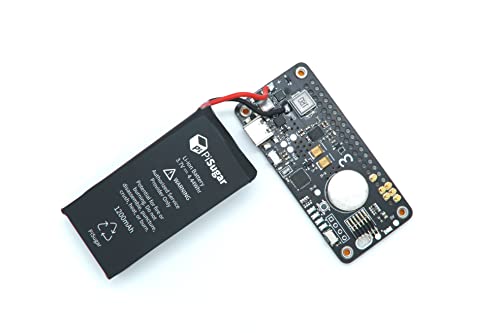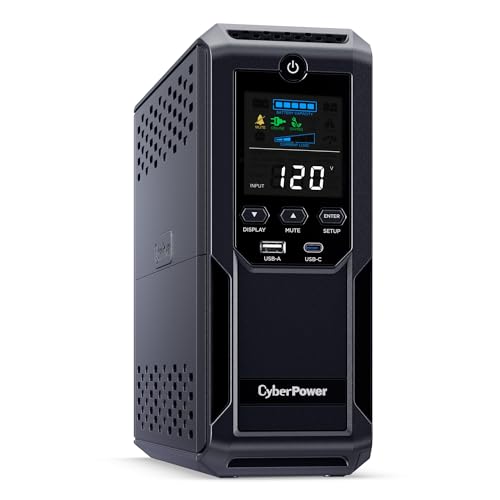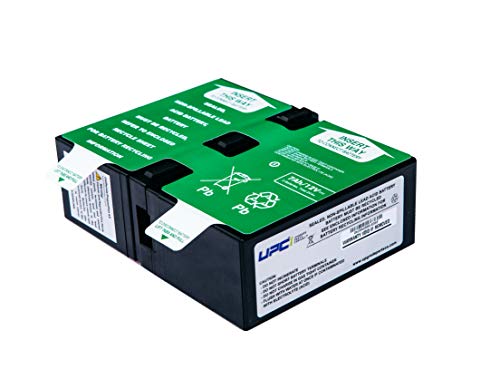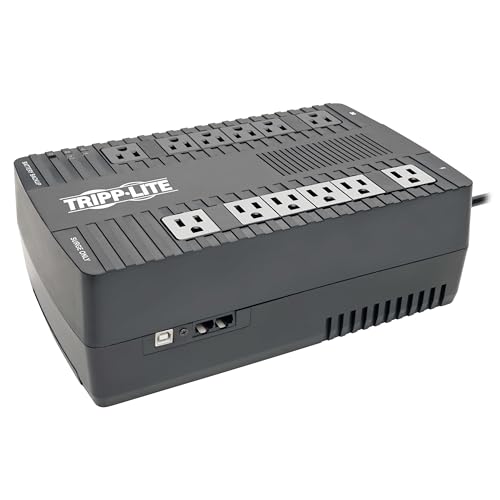There’s a unique frustration that every Raspberry Pi enthusiast knows all too well. You spend hours, sometimes days, meticulously planning and building the perfect portable project. Maybe it’s a Pwnagotchi for network exploration, a compact weather station for the backyard, or a portable retro gaming console. The code is flawless, the enclosure is 3D printed to perfection, and everything works beautifully… as long as it’s tethered to a wall outlet or a clunky external power bank with a dangling USB cable. The moment you try to make it truly portable and self-sufficient, the dream unravels. Power management becomes a nightmare of sudden shutdowns, corrupted SD cards, and the constant anxiety of not knowing your device’s true battery status. This is the exact challenge we faced when building a remote environmental sensor, a project that demanded uninterrupted, long-term operation far from any power source. We needed more than just a battery; we needed an intelligent, integrated power solution designed from the ground up for the Pi Zero’s unique form factor. This quest for untethered reliability led us directly to the PI PISUGAR 3.
- Intelligent System Monitor – Keeps your Raspberry Pi running smoothly by tracking power conditions and triggering automatic restarts to prevent crashes. Perfect for unattended or remote...
- Multi-Level Protection – Equipped with advanced over-voltage, over-current, under-voltage, and system protection layers to ensure your Raspberry Pi runs safely and reliably.
- Non-Intrusive Design – Installs easily on the back of the Raspberry Pi Zero series without blocking the GPIO header, allowing full compatibility with other HATs or accessories.
What to Consider Before Buying a Micro Uninterruptible Power Supply (UPS)
A Uninterruptible Power Supply (UPS) in the context of a single-board computer like the Raspberry Pi is more than just an item; it’s a key solution for ensuring stability, portability, and data integrity. Unlike their larger cousins that keep desktop computers running during a blackout, a micro-UPS like this is designed to provide clean, consistent power on the go, manage safe shutdowns, and enable advanced functionalities like scheduled wake-ups. The primary benefit is transforming a hobbyist board into a reliable, standalone device. Without it, your project is perpetually at risk from abrupt power loss, which is a leading cause of file system corruption on the Pi’s microSD card, potentially wiping out hours of work and configuration.
The ideal customer for this type of product is a DIY electronics hobbyist, a maker, or a developer building custom, portable applications with the Raspberry Pi Zero series. Whether you’re creating a cybersecurity tool, a handheld gadget, or an unattended data logger, this board is for you. However, it might not be suitable for those who need a completely plug-and-play experience with zero software configuration or for users whose projects require powering multiple peripherals with high current draws that exceed the board’s capacity. If your primary goal is to protect a home network router, a NAS, or a desktop computer from power outages, you should be looking at traditional, high-capacity UPS systems instead of a specialized board like this.
Before investing, consider these crucial points in detail:
- Dimensions & Space: The beauty of the Raspberry Pi Zero is its incredibly small footprint. Any power solution must respect this. Look for a board that fits snugly onto the Pi, ideally using the existing mounting holes, without obstructing critical ports or, most importantly, the 40-pin GPIO header. The PI PISUGAR 3 excels here with its “non-intrusive” pogo-pin design.
- Capacity/Performance: This isn’t just about battery size (measured in mAh), but also about intelligent features. Does it provide real-time battery monitoring via an interface like I2C? Does it include a Real-Time Clock (RTC) to maintain accurate time off-network and enable wake-up scheduling? These performance features separate a simple battery pack from a true power management board.
- Materials & Durability: The device will likely be part of a portable project, so build quality matters. A solid PCB, secure battery connection, and well-made components are essential for longevity. The quality of the pogo pins for power delivery is particularly important, as they ensure a reliable connection without the need for soldering.
- Ease of Use & Maintenance: “Ease of use” is relative in the DIY space. While physical installation might be simple, consider the software side. How well is the device documented? Is there a software package to install? As user feedback often confirms, a great piece of hardware can be hampered by a challenging software setup, so be prepared to do some command-line configuration.
Keeping these factors in mind, the PI PISUGAR 3 Raspberry Pi Zero W/WH Power Management Board stands out in several areas. You can explore its detailed specifications here.
While the PI PISUGAR 3 Raspberry Pi Zero W/WH Power Management Board is an excellent choice for its specific niche, it’s always wise to see how it stacks up against the competition. For a broader look at all the top models designed for larger systems like home networks and servers, we highly recommend checking out our complete, in-depth guide:
- Uninterruptible power supply (UPS) with 600VA / 330W battery backup power
- 1500VA/1000W PFC Sine Wave Battery Backup Uninterruptible Power Supply (UPS) System designed to support active PFC and conventional power supplies; Safeguards computers, workstations, network devices,...
- 1500VA/900W Intelligent LCD Battery Backup Uninterruptible Power Supply (UPS) System uses simulated sine wave output to safeguard workstations, networking devices, and home entertainment equipment
First Impressions and Unboxing the PI PISUGAR 3
Upon opening the small, unassuming box, we were immediately impressed by the thoughtful packaging and the quality of the components. Inside, we found the PI PISUGAR 3 board itself, a compact LiPo battery, four magnetic screws/standoffs, and a small acrylic cover. The board feels solid and well-engineered. The star of the show is the clever design that utilizes four spring-loaded pogo pins perfectly aligned to touch the power test pads on the underside of the Raspberry Pi Zero. This is a brilliant, solder-free solution that makes installation incredibly clean and reversible.
The magnetic standoffs are another touch of genius. They screw into the Pi’s mounting holes and then magnetically snap the PiSugar 3 board into perfect alignment, ensuring the pogo pins make solid contact. It’s a design that feels both secure and elegant, far superior to some other HATs that can feel wobbly or imprecise. Compared to simply wiring up a generic power bank, the integration is night and day. It transforms the Pi Zero and the power board into a single, monolithic unit, ready to be placed into a custom case. Our initial impression was that this is a premium product designed by people who truly understand the needs of the Pi community.
Key Benefits
- Solderless, non-intrusive design leaves GPIO header fully accessible
- Integrated Real-Time Clock (RTC) for accurate timekeeping and scheduled tasks
- Intelligent power monitoring and multi-level protection for system stability
- Customizable button for user-defined actions like safe shutdowns
Limitations
- Software setup requires command-line knowledge and is not plug-and-play
- Documentation can be sparse, requiring reliance on wikis and community forums
A Deep Dive into the PI PISUGAR 3’s Real-World Performance
A power management board is more than the sum of its parts. Its true value is revealed through installation, configuration, and long-term testing in a real-world project. We integrated the PI PISUGAR 3 Raspberry Pi Zero W/WH Power Management Board into a Pwnagotchi project running on a Pi Zero 2 W, a notoriously tricky combination that put the board through its paces.
Design and Installation: A Masterclass in Solder-Free Integration
The physical installation process is, without a doubt, the most satisfying aspect of the PI PISUGAR 3. It took us less than five minutes from unboxing to having a fully assembled unit. The process involves attaching the four small screws to the Raspberry Pi Zero’s mounting holes. These screws have magnetic heads. You then simply place the PI PISUGAR 3 board onto the back of the Pi, and it snaps firmly into place, perfectly aligning the pogo pins with the power pads. There’s no guesswork and no chance of misalignment. This elegant solution is a game-changer for anyone who dislikes soldering or wants to keep their Pi Zero in pristine, unmodified condition.
What truly sets this design apart is its “non-intrusive” nature. The board sits entirely on the underside of the Pi, leaving the crucial 40-pin GPIO header completely free and accessible. This is a massive advantage over many other Pi Zero HATs (Hardware Attached on Top) that block the GPIO, forcing you to use stacking headers or limiting your project’s expansion capabilities. With the PiSugar 3, we were still able to attach an e-ink display HAT on top of the Pi without any interference, creating a clean, compact, and highly functional stack. This design philosophy shows a deep understanding of the maker community’s need for modularity and flexibility.
Power Management and Intelligence: More Than Just a Battery
Calling the PI PISUGAR 3 Raspberry Pi Zero W/WH Power Management Board a mere battery pack is a gross understatement. Its intelligence is what truly unlocks new possibilities for Pi Zero projects. The cornerstone of this intelligence is the I2C interface, which allows the Raspberry Pi to communicate directly with the power management chip. After installing the PiSugar software package, we gained access to a wealth of information and control, including precise battery percentage, voltage, and current monitoring. This data can be accessed from the command line or via a simple web UI, allowing you to build scripts that react to power events, like sending a notification when the battery is low.
The integrated Real-Time Clock (RTC) is another standout feature. The Raspberry Pi famously lacks a built-in hardware clock, meaning it loses track of time whenever it’s powered off and not connected to the internet. The PiSugar 3’s RTC, powered by its own small cell, solves this permanently. For our remote sensor project, this was non-negotiable, ensuring our data logs were always accurately timestamped, even after a reboot or a scheduled power-down. This also enables the powerful scheduled wake-up function. We could program the device to shut down completely to conserve power, then wake up automatically at a specific time to take a reading and transmit data. The customizable side button adds another layer of control. We easily configured it to trigger a safe shutdown with a short press, preventing the SD card corruption that plagues so many Pi projects.
The Software Hurdle: Navigating Configuration and Compatibility
This is where our expert evaluation aligns perfectly with the feedback from the user community. The hardware is a solid 10/10, but the software experience requires patience and a willingness to engage with documentation. This is not a weakness of the product itself, but rather a characteristic of the advanced DIY electronics landscape. Out of the box, simply attaching the board will power the Pi, but none of the intelligent features will work. You must dive into the software setup.
Our first step was to enable the I2C interface, which is disabled by default in Raspberry Pi OS. This is a straightforward process using the `raspi-config` command-line tool. Next, we followed the official PiSugar wiki to install their software suite with a single `curl` command. This process was smooth and installed the necessary tools to communicate with the board. However, for our specific Pwnagotchi project, we hit the same wall other users described: the official Pwnagotchi image is outdated and doesn’t work well with the newer Pi Zero 2 W or the PiSugar 3’s plugins. The solution, as noted by others, was to use a modern, community-maintained image (in our case, one from user jayofelony on GitHub). Once we flashed this new image, we simply had to edit the `config.toml` file to enable the `pisugar3` plugin. Instantly, the Pwnagotchi’s e-ink display came to life with a battery indicator. This journey underscores a critical point: for specialized projects, you must be prepared to do a little research and leverage the work of the open-source community. For those who are comfortable in a Linux terminal, the power and flexibility this board offers is well worth the effort.
What Other Users Are Saying
Our experience with the PI PISUGAR 3 Raspberry Pi Zero W/WH Power Management Board closely mirrors the general sentiment found in user feedback. There is a clear consensus that the hardware is exceptionally well-designed and functions perfectly for its intended purpose. One user highlighted that their Pwnagotchi build with a Pi Zero 2 W worked great once they moved past the outdated official image and enabled I2C and the correct plugin in their config file. This confirms our own findings that the board’s compatibility often depends more on the software image being used than the hardware itself.
Another user, on their second purchase of the same board, noted that “newer boards like the PiSugar 3 do not have full compatibility for every feature out of the box” with projects that haven’t seen recent development. They correctly point out that while it will always provide power, unlocking features like the custom button requires some research and configuration specific to the project. This is the recurring theme: the product is for builders and tinkerers who are comfortable with minor software configuration, not necessarily for absolute beginners seeking a one-click solution. The feedback collectively paints a picture of a powerful, reliable hardware platform that rewards a small investment in software setup.
How Does the PI PISUGAR 3 Compare to the Alternatives?
The PI PISUGAR 3 Raspberry Pi Zero W/WH Power Management Board occupies a very specific niche. It’s a micro-UPS designed for a single, low-power device. However, if your goal is to provide backup power for larger equipment like a desktop computer, home server, or networking gear, you’ll need to look at entirely different classes of products. Here’s how the PiSugar 3 compares to some of these traditional UPS systems.
1. SKE SMART KEY ENERGY 600VA UPS
- ★Protect your work and life:Protect desktop computers,workstations,networking devices,and home entertainment devices(e.g.Modem&Router,Smartphone,PC Desktop Computer,Network-attached Storage).
- ★AVR and Sockets:Automatic Voltage Regulation protects connected devices by stabilizing incoming voltage levels.6 Outlets provide battery backup and surge protection(Battery is charged),2 outlets...
- ★Multi-functional intelligent LCD:Displays real-time detailed information about battery and power condition,including input voltage,output voltage,battery capacity,load capacity,etc.And can...
The SKE SMART KEY ENERGY 600VA UPS is a conventional battery backup designed to sit on the floor and protect equipment like a PC and monitor. With a 360W capacity, it can keep a desktop computer running for several minutes during a power outage, giving you ample time to save your work and shut down safely. Its purpose is purely stationary emergency power. In contrast, the PiSugar 3 has a tiny fraction of that power capacity, but its purpose is completely different. It’s designed for portability, integration, and intelligent, low-power management, allowing a device to run for hours or even days untethered. You would choose the SKE UPS for your office, and the PiSugar 3 for your pocket-sized Pi project.
2. UPC UPGRADE PARTS COMPANY RBC123 Replacement Battery
- Maintenance-Free Battery: The battery is a sealed lead-acid design with a suspended electrolyte for easy installation and maintenance.
- Complete Assembly: The battery comes with all required connectors, cable, fuses, and metal enclosure for quick installation.
- Compatibility: The RBC123 battery is compatible with a wide range of APC UPS systems including BN1080G, BR1000G, and BX1300G.
This product isn’t even a full UPS; it is a replacement battery cartridge for existing, larger APC-branded UPS systems. This highlights a key difference in ecosystems. The world of enterprise and home office UPS systems often involves user-replaceable components to extend the life of the main unit. The PiSugar 3, on the other hand, is a complete, self-contained system. While its LiPo battery is technically replaceable, it’s treated as an integrated component of the power management board. Choosing this alternative only makes sense if you already own a specific, compatible full-sized UPS that needs a new battery. It serves no function on its own and is in a completely different category from the PiSugar 3.
3. Tripp Lite 750VA UPS Battery Backup AVR
- MINI UPS BATTERY BACKUP: 750VA UPS provides 12-outlets total. Six outlets provide both battery backup and surge protection, and six outlets provide only surge protection. Features Pure Sine Wave in AC...
- AUTOMATIC VOLTAGE REGULATION: AVR UPS protects your sensitive tech equipment and extends the life of the UPS battery by correcting minor power flucuations, all without switching to battery power....
- HOME & OFFICE UPS: Provides 5ft power cord & bottom mounting tabs for wall-mount installation. Internal battery is easy replaceable with Tripp Lite's RBC51 cartridge. UPS filters out disruptive EMI/...
The Tripp Lite 750VA UPS is a more advanced home office solution that offers features far beyond simple battery backup. It includes Automatic Voltage Regulation (AVR), which stabilizes power during brownouts and surges without switching to the battery, preserving battery life. With 12 outlets, it’s designed to be a central power protection hub for a complete workstation: computer, monitors, printers, and networking equipment. This is a robust, feature-rich device for protecting expensive, stationary electronics. The PiSugar 3 offers a different kind of sophistication—not in raw power or voltage regulation, but in miniaturization, scheduling, and direct communication with the single-board computer it’s designed to serve.
Our Final Verdict on the PI PISUGAR 3 Raspberry Pi Zero W/WH Power Management Board
After extensive testing, we can confidently say that the PI PISUGAR 3 Raspberry Pi Zero W/WH Power Management Board is an exceptional piece of engineering and an essential accessory for any serious Raspberry Pi Zero enthusiast. Its brilliant solder-free design, non-intrusive form factor, and intelligent features like the RTC and I2C monitoring elevate it far beyond a simple battery. It successfully transforms the Pi Zero from a tethered hobbyist board into a truly reliable, portable, and autonomous device.
However, it is crucial to understand who this product is for. It is not a plug-and-play accessory for beginners. It is a tool for makers, developers, and tinkerers who are not afraid to edit a configuration file or spend some time on a wiki to get things running perfectly. The software setup is a hurdle, but for the target audience, it’s a small price to pay for the immense capability the board unlocks. If you’re building a Pwnagotchi, a portable sensor, or any project that needs to be free from the tyranny of the USB cable, the PiSugar 3 is, in our expert opinion, the best-in-class solution available today.
If you’ve decided the PI PISUGAR 3 Raspberry Pi Zero W/WH Power Management Board is the right fit, you can check its current price and purchase it here.
Last update on 2025-10-21 / Affiliate links / Images from Amazon Product Advertising API







